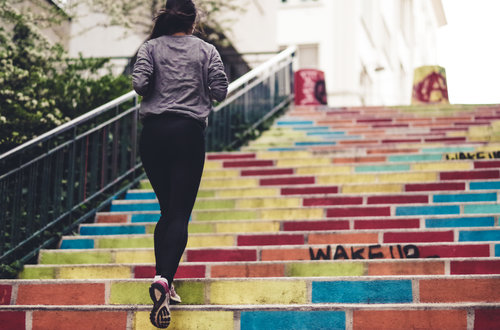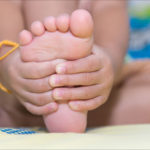Rach here your local Physio from Williamstown, last Friday, I decided on a whim to head down to the local driving range. Now, I haven’t been to a driving range for several years, nor do I have any expertise playing golf. Nevertheless, I chose to hit 100 balls as far as I could for a brief but cathartic 30mins.
By the end of my hit, I was in a small amount of discomfort. Turns out I’d managed to get a blister on my thumb. Now this clearly isn’t the end of the world, and didn’t stop me from finishing those 100 balls, but a couple of hours later when I was at home it did become a bit of an annoyance.
The self-proclaimed golf experts out there would arguably say my technique was at fault. Clearly my swing was ‘below-par’. Others may say I should have worn a golf glove. Common sense would say maybe I shouldn’t have tried smashing 100 balls at a 150m target with a 4 iron for the first time in several years. We are all correct.
Now, let’s say every weekend I continued to go out there and hit 100 balls. Has my technique changed? Probably not. Was I using a glove? Not unless you count the band-aids. Have I changed my load in response to a small level of discomfort? No, I’ve just pushed through.
A few weekends would go by, and no doubt more blisters would develop until I’m in enough pain and discomfort to stop going to the driving range. I might wait for the blisters to calm down and try again, or I might now associate the driving range with pain and discomfort and not bother anymore. Either way I have had to stop doing something that was giving me enjoyment.
What I should have done after that first week, is realised 100 balls was pushing my tolerance a little, and maybe cut back to 50 balls for a couple of weeks until my hands got used to it before building back up again. Blisters become calluses, as any weight-lifter will tell you, they may not look so pretty but they are one of many ways that your body adapts to a novel load or stimuli. Sure enough, I would have been back to those 100 balls within a few weeks, my hands would have become used to the nature of the movement and I would have had no further issues (touch wood).
Alternatively, I could have turned around and decided I wanted to continue hitting 100 balls but I just needed to buy myself a glove. This glove would have then protected any deficits I had in my handling, and would have allowed me to continue at my current level. Going forwards maybe I would always need a glove to protect myself from those blisters returning, but if I’m happy to remember my glove each time, there’s no real issue.
Which brings me to the third option I should have also considered. Being an osteopath for many years in Williamstown, I’m fully aware of my beginner status when it comes to golf, and you can’t correct mistakes that you don’t know you’re making. So what’s to stop me from seeking professional help to iron out any technical errors? Nothing. Even if I combine this approach with dropping down to 30 balls for a couple of weeks, or getting myself a glove, it’s a short-term adjustment to facilitate a long-term improvement and thus allowing me to keep going back to that driving range each week and enjoying myself.
I know tales of my golfing prowess may be leaving you somewhat perplexed, but let me get to my point. Let’s say you went for a run, and your knee pulled up sore. Or your child started up playing twice as much sport this season, and they’re complaining of heel pain. Would you advise to push through, develop more metaphorical ‘blisters’, and seek treatment or professional help at the last stage when the pain or discomfort has become enough to stop the activity altogether?
Or would you maybe consider managing your load? Not trying to push yourself to hit 100 balls every week, or complete that 5k run, or get to every single training session.
Maybe you listen to your body and start small, ensure it’s at a tolerable level, before progressively increasing that load.
It might take slightly longer to reach the level you’d like to be, but isn’t that better than taking time off later because you’re in pain?
Secondly, don’t forget about your golf glove. What do your runners look like? How old are they? Have you had them properly fitted or checked over? All very easily answered questions with a quick visit to your local running shop.
And finally, professional assistance. Seeking help proactively rather than re-actively. Not waiting for those blisters to multiply, but realising that your body is trying to tell you something and listening in. You will be more thankful for a couple of appointments that keep you golfing or running or training than several appointments that are trying to get on top of your pain management before tackling the true cause of the issue.

If you’re experiencing discomfort during your run training or would like to avoid injury, drop in and see our Williamstown Physio Rachel. She’ll develop a program to keep you doing the things you love.






